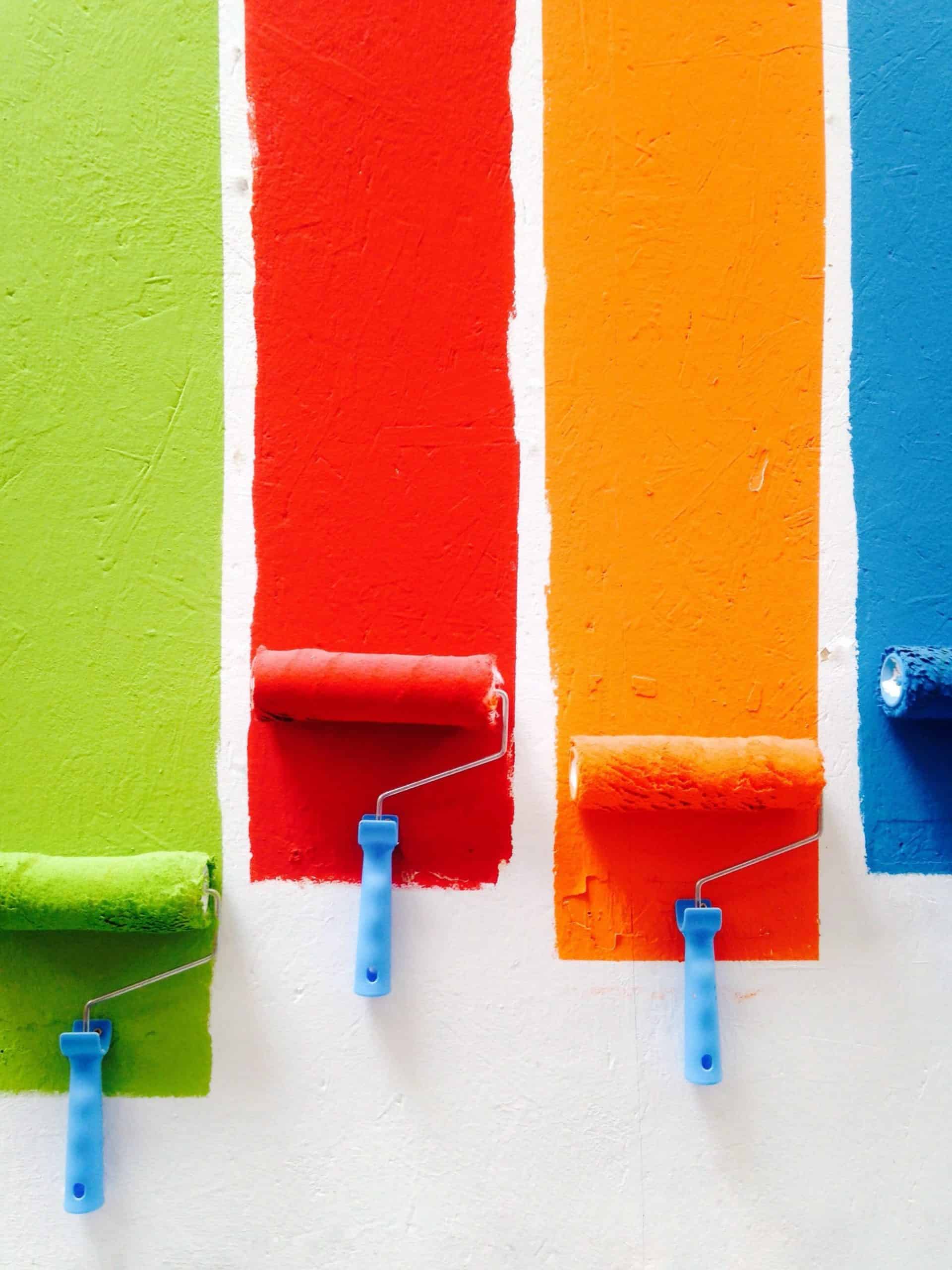Painting your house isn’t always just about picking a color and slapping it onto walls and objects. The fact is that there are many types of house paint and they all serve different purposes. Depending on your specific needs, you may have to pick from several types for different parts of your home.
With this guide, we’re going to cover all of the common kinds of paint that you might need. We'll also explain to apply each of them for the most professional and longest lasting possible results.
The Two Most Basic Paint Types: Oil-Based and Water-Based

Essentially, all the kinds of house paint used for home interiors, exteriors, or trim and doors either consist of acrylic, water-based latex paint solutions, or oil-based paint blends. Each of these paint types is used for different things.
Oil-based paints are very rarely something we’d use to paint house exteriors and walls. Today, the only situations where we use them are with painting cabinets and new construction trim and doors. They cannot be used in a house that is furnished and occupied, because it's extremely difficult and risky to spray oil on trim. Brushing oil is not suggested because it's not an easily workable/brushable material.
Oil paints tend to be much tougher at adherence than their water-based counterparts. However, newer paint technologies from high quality brands like Sherwin Williams are slowly making oil-based paint obsolete in favor of ever tougher acrylic solutions.
Some positive and negative characteristics of oil-based paints include:
- They dry and cure slowly.
- Chemical solvents are needed for cleaning brushes and messes.
- They’re usually more durable than acrylic paints.
- Oil offers a smoother, tough finish.
Acrylic latex water-based paints have almost universally been used for exterior painting for a long time and they’re also usually used for all interior wall painting, as well. These paint types are increasingly durable even for many surfaces for which we’d previously have used oil-based solutions.
Some characteristics of water-based household paint that we should note:
- They dry very quickly.
- It’s easy to clean tools and spills after using latex acrylics.
- They’re extremely versatile these days.
- Many brands of acrylic still aren’t as durable as oil.
- Acrylic offers better UV light resistance for handling direct sunlight.
The bottom line for picking between oil and acrylic water-based paints is that for all exterior and interior wall work, we’d use high quality acrylics. For trim, doors, and certain heavily handled or humidity-exposed fixtures, oil-based paints are still a strong option.
Other House Paint Categories
Moving beyond the basic separation between oil-based and water-based house paint, we also have a few other subcategories of paint that we need to clarify. For acrylic paints, these include:
Interior paint is acrylic latex but comes in a broader range of finishes and with a formulation that’s designed to look smooth and dry when applied specifically to interior walls. Some newer types of interior acrylics are even available for trim, doors, and other surfaces we’d have painted with oil before.
Exterior paint is formulated differently than its interior cousins so that they can endure exposure to rain, sun, snow, and other outdoor elements much more robustly.
For oil-based paints, the main subcategories differentiate how glossy their finish is. The recent availability of new oil-based types called alkyds can produce faster-drying oil paints that are easier to work with.
A Breakdown of Finish Types
All paints have a finish. This is what defines how much shine or gloss they have once they dry. Paint finishes range along a scale from no gloss to extremely high gloss. Here’s a breakdown:
Flat, Matte: At the no-gloss end of the scale, we have matte or flat paints. These offer no reflection or glossiness and are usually ideal for certain exterior walls, interior ceilings and some interior walls. They’re not ideal for settings like family room or children’s bedroom walls because grime shows up easily on them and surfaces painted with flat paints can be tricky to clean.
Eggshell: Eggshell finish is just a notch up from flat or matte in terms of glossiness. It finishes smoothly with a tiny bit of reflection and we’d use it for the walls of our main living spaces in the home.
Satin: Slightly glossier than eggshell, satin is great for easy wall cleaning and useful for spaces where walls get touched often. It looks good on any interior wall without being too shiny.
Semi-gloss: Semi-gloss paint is just a bit too shiny for interior walls because of how much light it reflects. We would reserve it for doors, cabinets and walls in rooms that can get a lot of humidity, such as kitchens or bathrooms. A semi-gloss paint finish is also excellent for large pieces of furniture.
Gloss: Fully glossy paint is something we’d want to use for detailed trim, doorway edges, and certain types of furniture. This paint can either be oil or water-based and is usually sold as an oil-based product. It’s superbly tough and resists grime and water damage.
Enamel: Enamel is basically the same classification as gloss but with is almost always applied to oil-based paints. However, high quality brands like Sherwin Williams and some others have started to offer water-based paint options that are classified as enamels.
All About Primers
Primers are a whole other category of chemical solution that we often need to use when it comes to painting. Using primer isn’t always necessary during interior or outdoor house painting but for certain situations, it’s crucial.
Primer is not paint even though it can look like paint. Instead, primer is used as a sealant, adhesive, and protector for the durable application of actual paint over a surface. Because of this, primers are always applied before a first new coat of paint and are never applied as a finishing coat.
You should use primer in a couple of important situations. First, it’s obligatory if we’re painting bare surfaces for the very first time. Secondly, while we can apply new oil paint directly over existing acrylic water-based paint surfaces, applying primer is essential for painting acrylics over existing oil surfaces.
Let the Experienced Professional Painters Help
If you're hoping to paint any part of your home and still have doubts about how to take care of this complicated job in a way that looks great, you can call on the professionals at Walla Painting. We know how to use the right types of house paint to deliver work that looks superb while being extremely durable.
Check out our recent articles
Thinking of giving your kitchen a fresh, new look without breaking the bank? Painting your kitchen cabinets could be an inexpensive way
Picking the right paint color? It’s way more involved than just picking a hue on a swatch and calling it a day.
Painting a kitchen can transform a tired and dated space into a rejuvenating area where family and friends gather to create meals
